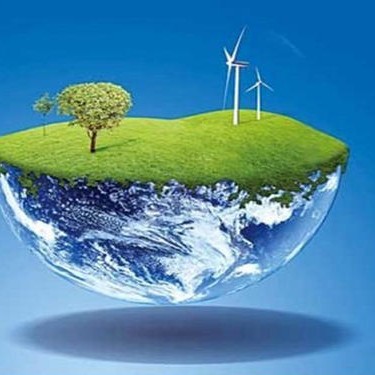
-
 Afrikaans
Afrikaans -
 Albanian
Albanian -
 Amharic
Amharic -
 Arabic
Arabic -
 Armenian
Armenian -
 Azerbaijani
Azerbaijani -
 Basque
Basque -
 Belarusian
Belarusian -
 Bengali
Bengali -
 Bosnian
Bosnian -
 Bulgarian
Bulgarian -
 Catalan
Catalan -
 Cebuano
Cebuano -
 China
China -
 China (Taiwan)
China (Taiwan) -
 Corsican
Corsican -
 Croatian
Croatian -
 Czech
Czech -
 Danish
Danish -
 Dutch
Dutch -
 English
English -
 Esperanto
Esperanto -
 Estonian
Estonian -
 Finnish
Finnish -
 French
French -
 Frisian
Frisian -
 Galician
Galician -
 Georgian
Georgian -
 German
German -
 Greek
Greek -
 Gujarati
Gujarati -
 Haitian Creole
Haitian Creole -
 hausa
hausa -
 hawaiian
hawaiian -
 Hebrew
Hebrew -
 Hindi
Hindi -
 Miao
Miao -
 Hungarian
Hungarian -
 Icelandic
Icelandic -
 igbo
igbo -
 Indonesian
Indonesian -
 irish
irish -
 Italian
Italian -
 Japanese
Japanese -
 Javanese
Javanese -
 Kannada
Kannada -
 kazakh
kazakh -
 Khmer
Khmer -
 Rwandese
Rwandese -
 Korean
Korean -
 Kurdish
Kurdish -
 Kyrgyz
Kyrgyz -
 Lao
Lao -
 Latin
Latin -
 Latvian
Latvian -
 Lithuanian
Lithuanian -
 Luxembourgish
Luxembourgish -
 Macedonian
Macedonian -
 Malgashi
Malgashi -
 Malay
Malay -
 Malayalam
Malayalam -
 Maltese
Maltese -
 Maori
Maori -
 Marathi
Marathi -
 Mongolian
Mongolian -
 Myanmar
Myanmar -
 Nepali
Nepali -
 Norwegian
Norwegian -
 Norwegian
Norwegian -
 Occitan
Occitan -
 Pashto
Pashto -
 Persian
Persian -
 Polish
Polish -
 Portuguese
Portuguese -
 Punjabi
Punjabi -
 Romanian
Romanian -
 Russian
Russian -
 Samoan
Samoan -
 Scottish Gaelic
Scottish Gaelic -
 Serbian
Serbian -
 Sesotho
Sesotho -
 Shona
Shona -
 Sindhi
Sindhi -
 Sinhala
Sinhala -
 Slovak
Slovak -
 Slovenian
Slovenian -
 Somali
Somali -
 Spanish
Spanish -
 Sundanese
Sundanese -
 Swahili
Swahili -
 Swedish
Swedish -
 Tagalog
Tagalog -
 Tajik
Tajik -
 Tamil
Tamil -
 Tatar
Tatar -
 Telugu
Telugu -
 Thai
Thai -
 Turkish
Turkish -
 Turkmen
Turkmen -
 Ukrainian
Ukrainian -
 Urdu
Urdu -
 Uighur
Uighur -
 Uzbek
Uzbek -
 Vietnamese
Vietnamese -
 Welsh
Welsh -
 Bantu
Bantu -
 Yiddish
Yiddish -
 Yoruba
Yoruba -
 Zulu
Zulu
Fiberglass Ducts Showcase Outstanding Durability and Resistance in Various Applications
The Exceptional Resistance of Fiberglass Ducts A Comprehensive Overview
In the realm of modern construction and industrial applications, the choice of materials plays a pivotal role in ensuring both functionality and durability. Among the various materials available, fiberglass ducts have emerged as a leading choice due to their exceptional resistance properties. This article aims to explore the reasons behind the growing popularity of fiberglass ducts, highlighting their unique features and advantages.
Understanding Fiberglass Ducts
Fiberglass ducts are made from a composite material that combines glass fibers with resin. This unique combination results in a lightweight yet robust product that is designed to withstand a variety of environmental challenges. The ducts are typically used in HVAC (Heating, Ventilation, and Air Conditioning) systems, where they provide a reliable means of air distribution while simultaneously minimizing energy loss.
Exceptional Resistance to Environmental Factors
One of the most notable attributes of fiberglass ducts is their remarkable resistance to corrosion. Unlike traditional metal ducts, which can succumb to rust and deterioration when exposed to moisture, fiberglass resists the damaging effects of humidity and other corrosive elements. This makes fiberglass an ideal choice for applications in coastal or industrial areas where corrosive agents are prevalent.
Additionally, fiberglass ducts exhibit superb thermal insulation properties. The material does not conduct heat, which minimizes energy loss during air transport. This resistance to heat transfer also helps in maintaining ambient temperature, leading to increased energy efficiency in HVAC systems. In an era where sustainability is of paramount importance, the thermal efficiency of fiberglass ducts offers both economic and environmental advantages.
Fire Resistance and Safety Standards
fiberglass ducts demonstrate exceptional resistance against ...

Safety is a primary concern in any construction project, particularly regarding fire hazards. Fiberglass ducts are designed to meet stringent fire safety standards. They are non-combustible and do not emit toxic fumes when exposed to high temperatures, unlike some plastic alternatives. This quality is essential in ensuring the safety of any facility’s occupants and property.
Moreover, fiberglass ducts possess a low smoke rating, which enhances their safety profile. This characteristic is particularly crucial in commercial and industrial applications, where the potential for fire can have dire consequences. The ability of fiberglass to maintain structural integrity under high heat conditions further reinforces its suitability in environments that require stringent safety protocols.
Ease of Installation and Maintenance
Another reason for the increasing preference for fiberglass ducts is their ease of installation. The lightweight nature of fiberglass makes transportation and assembly straightforward, often leading to reduced labor costs and installation time. Furthermore, fiberglass ducts are designed to fit seamlessly into existing systems, allowing for versatile applications in retrofitting or new installations.
In terms of maintenance, fiberglass ducts require minimal upkeep. Their smooth surfaces are less prone to dust and debris accumulation, making them easier to clean while ensuring optimal airflow. This characteristic not only contributes to better indoor air quality but also reduces the frequency of maintenance interventions, further enhancing their cost-effectiveness over time.
Conclusion
In summary, fiberglass ducts demonstrate exceptional resistance to corrosion, fire hazards, and thermal transfer, making them an ideal choice for a variety of applications. Their lightweight nature, coupled with ease of installation and low maintenance requirements, further elevates their status as a preferred option in HVAC systems and beyond. As industries evolve and prioritize efficiency and safety, fiberglass ducts stand out as a reliable solution that meets the demands of modern construction and design. Embracing this advanced material not only ensures enhanced performance but also paves the way for more sustainable and secure building practices in the future.









